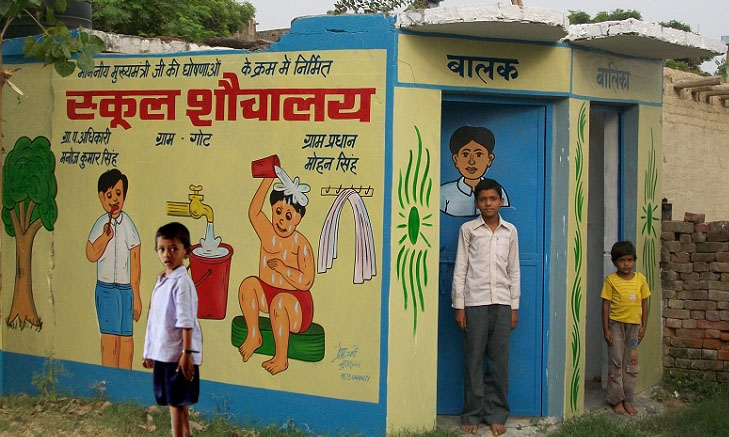Only 10 private companies and two industry bodies contributed towards building toilets in schools under the famed Swacch Bharat Mission till March 1, 2016 from the private sector.
The number of toilets these companies built don’t constitute for even one per cent of the total toilets built. Public Sector companies played a rather noticeable role in making sanitation accessible to students with 64 central PSUs participating in the change.
Figures mentioned in Swachhta Status Report published by the National Sample Survey Office under the Ministry of Statistics and Programme Implementation, give an analytical picture of the Swachh Bharat Mission scheme that got evident fame in the corporate sector. Prime Minister Narendra Modi in his first Independence Day speech had urged the corporate sector to use their Corporate Social Responsibility (CSR) funds to install toilets. Sanitation in schools plays a crucial role in education of children in the country. Girl students particularly drop out highly due to lack of clean and maintained toilets in schools.
According to the report, the corporate sector companies constructed only 3,466 toilets and PSUs built 1,41,636 toilets. A total of 4,17,796 toilets in 2.61 lakh schools were built by government, private firms and PSUs till March 1, 2016 Under the Swachh Vidyalaya initiative, out of the 3,466 toilets, 176 were built by industry bodies – FICCI and CII. Tata Consultancy Services constructed the highest number of toilets at 1509 followed by Mahindra Group at 1171.
Mercedes Benz stands last in the list with construction of one toilet. Building 51,115 toilets under the Swacch Vidyalaya initiative, Coal India Limited, a PSU was the highest corporate contributor. Jute Corporation of India, another PSU built one toilet and stood last in the list. Most number of toilets- 56,912 were built in Bihar whereas private companies built most toilets- 1,542 in Andhra Pradesh.
The Swachhta Status Report tells a lot about the sanitation conditions in the country. Figures say access to latrines has improved. Percentage of households without latrines has come down from 65.2% in 2008-09 in rural areas to 59.4% in 2012. In urban areas, the percentage of households without latrines is seen dropping down from 11.3% to 8.8% from 2008-09 to 2012. In rural areas, 45.3% households reported to have sanitary toilets whereas in urban areas 88.8% households reported to have sanitary toilets.
While, 87.9% urban Indian households have access to water for use in toilets, only 42.5% households in rural India were found to have the same access. In rural areas, the percentage of persons going for open defecation was estimated to be 52.1%. In urban India, the percentage of same was estimated to be 7.5%. To promote cleanliness and sanitation, Ministry of Health and Family Welfare has launched an attractive scheme named Kayakalp.
Under the scheme, it has been decided to give the awards to the Central Government Hospitals/Institutions for best in terms of sanitation and cleanliness. Tertiary care level hospitals: Top three Central Government Hospitals/Institutions in terms of sanitation and cleanliness will receive a cash award and a citation worth Rs 5 crore at the first level, Rs 3 crore at second level and Rs 1 crore at third level.


